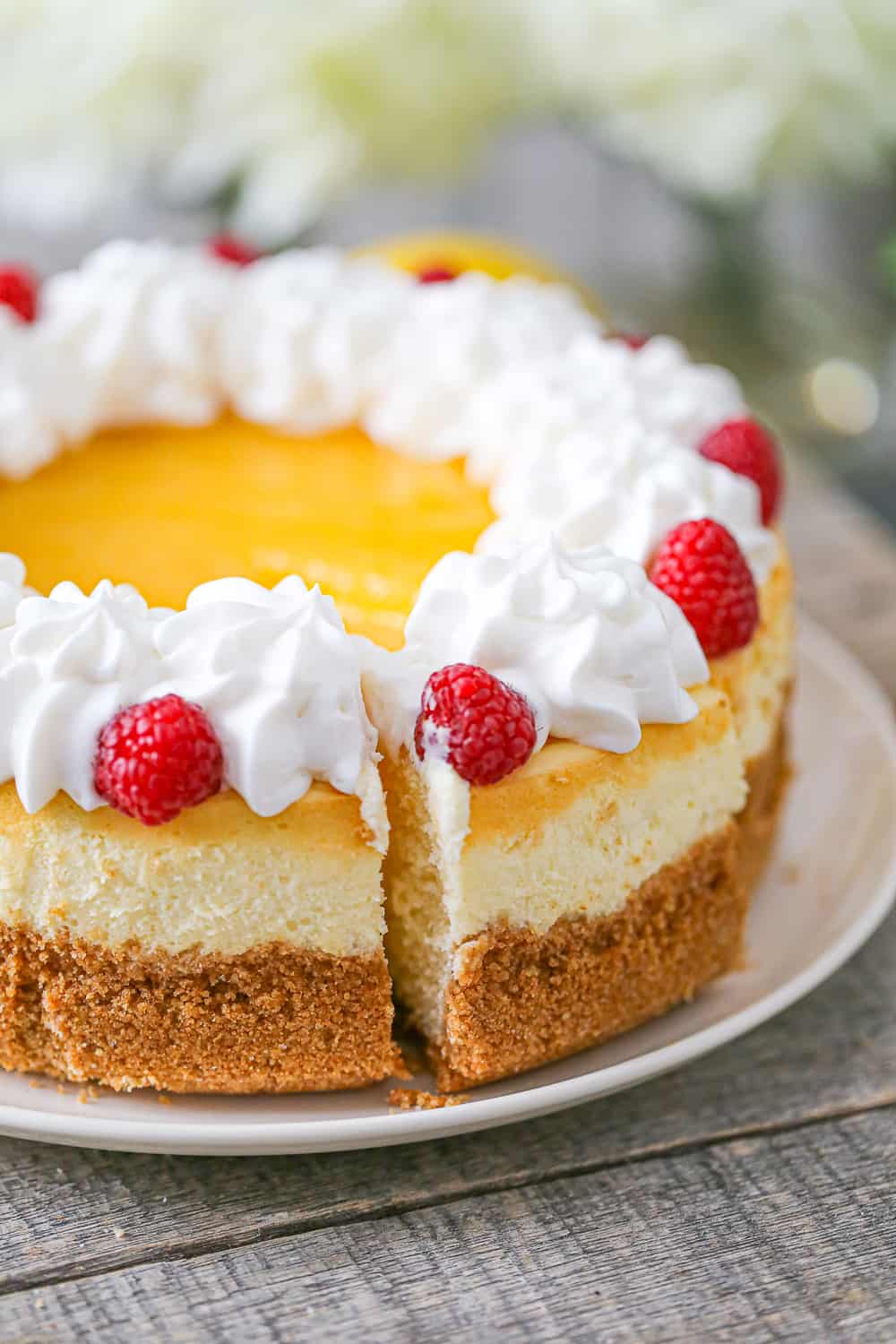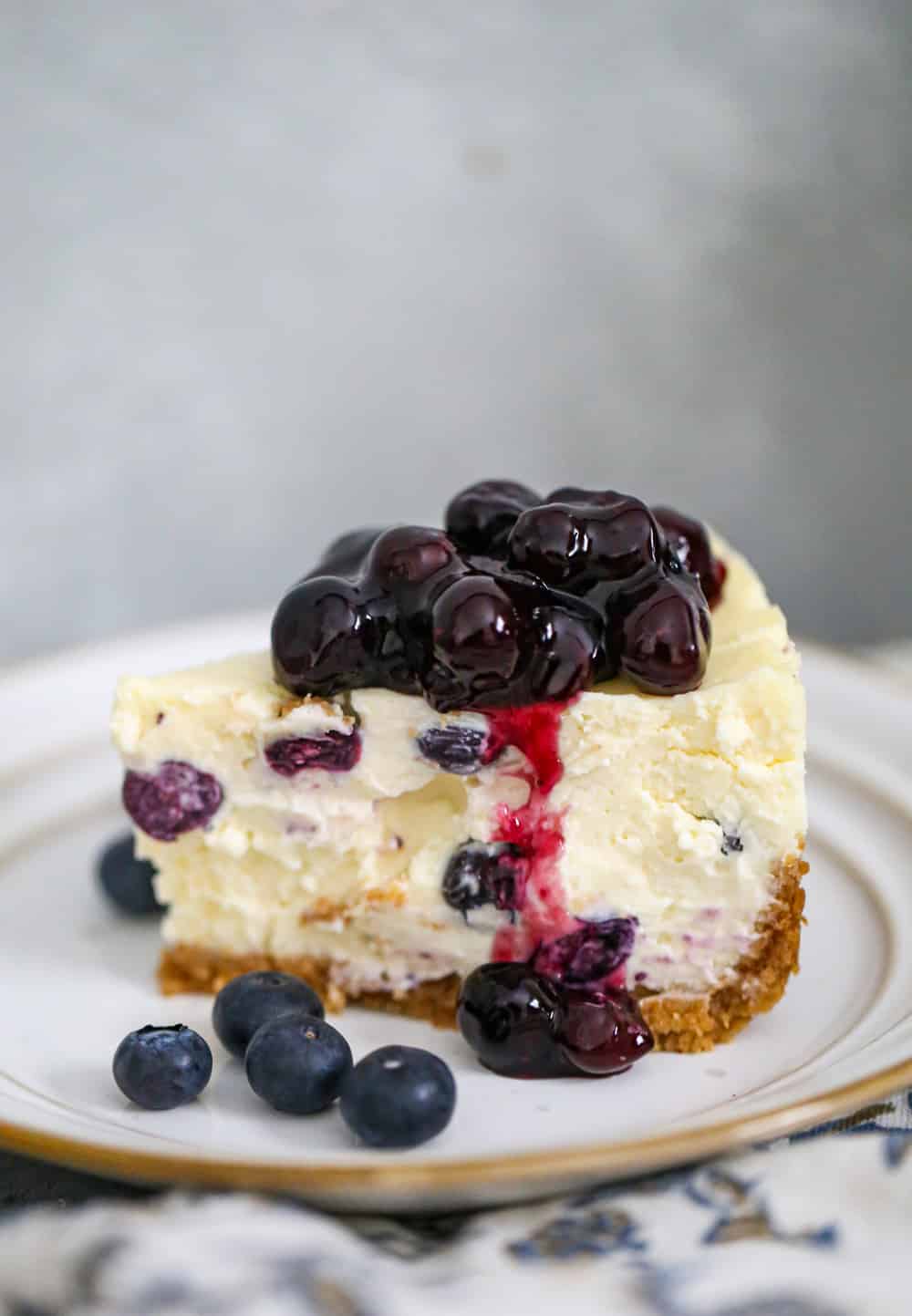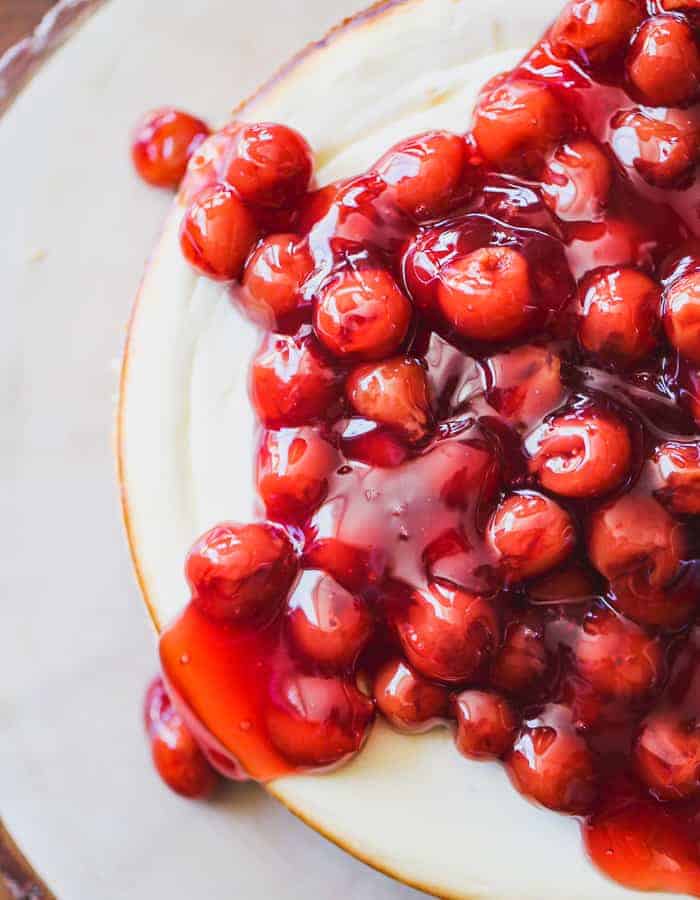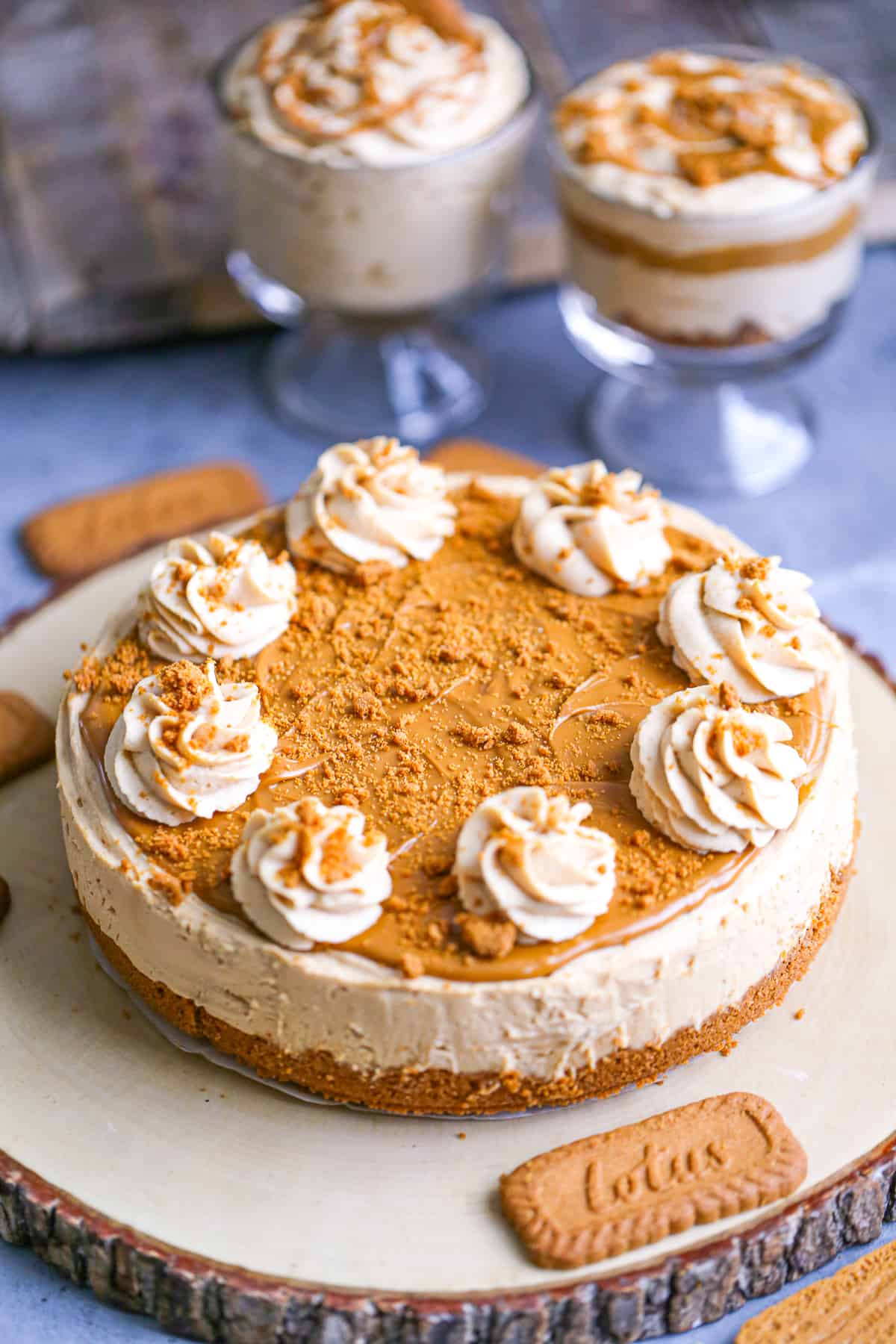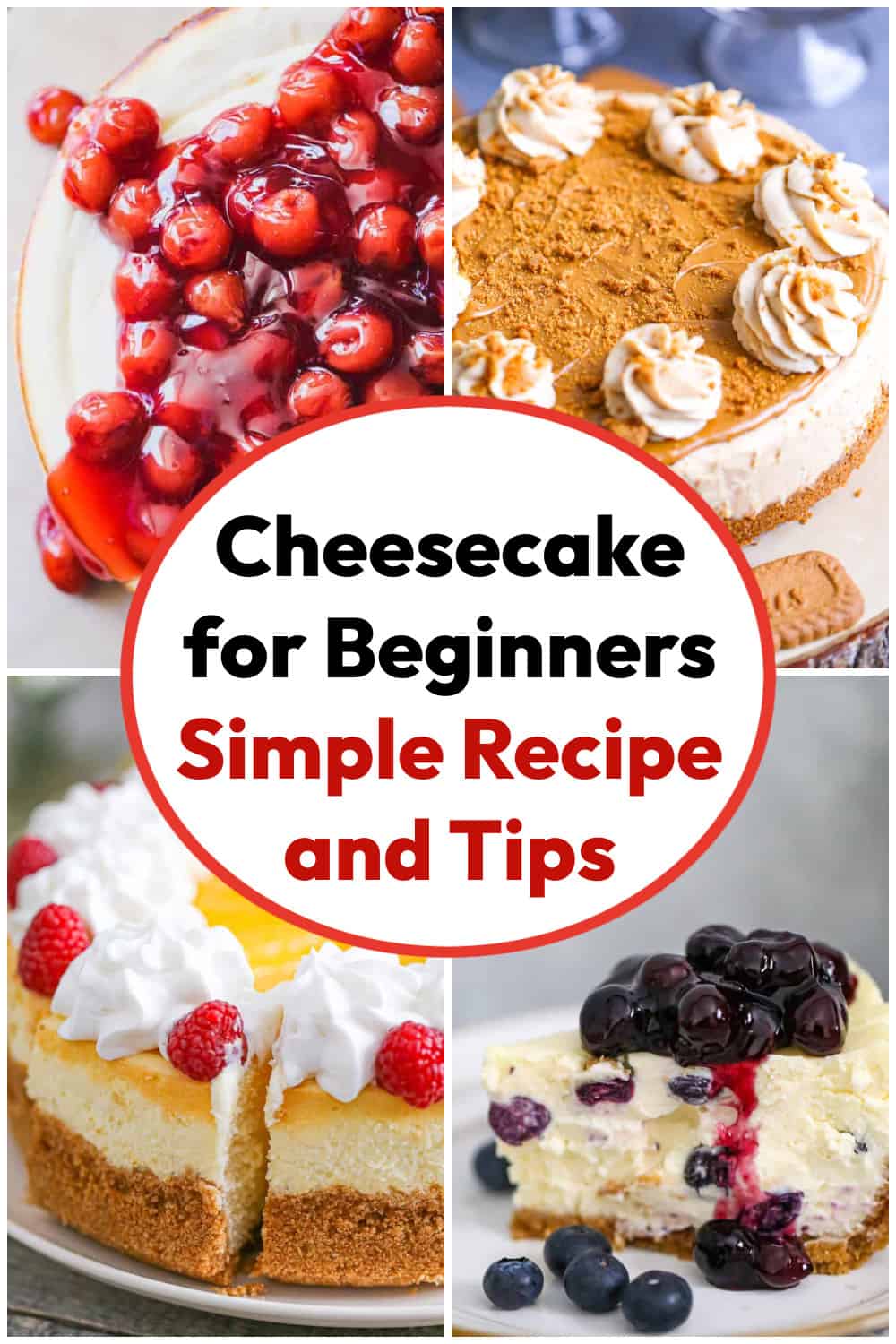Cheesecake for Beginners: Simple Recipe and Tips
As an Amazon Associate, I earn from qualifying purchases. Read the full disclosure here.
The Perfect Cheesecake Experience! Before you do a cheesecake dive, read through this Cheesecake for Beginners: Simple Recipe and Tips before you begin baking your dreamy cheesecake!
Cheesecake lovers will thank you and you will see for yourself, what a difference these tips will help you to bake the most perfect cheesecake! Everyone will be in ‘awe’ of your awesome cheesecaking skills.
With specific tips for baking cheesecake tips and techniques, we’ll help you achieve that coveted smooth and velvety texture and take your cheesecake game to the next level. So put on your apron and get ready to dive into the delicious world of cheesecake.
To Start – Cheesecake Baking Tips
Cheesecakes are usually made up of soft cream cheese, mascarpone, ricotta cheese and sometimes cottage cheese.
- The cheesecake filling is normally made by creaming the cream cheese and mixing it with eggs, sugar and whatever other flavors you want to incorporate into it. The mixture is then poured into a special spring-form pan and baked.
- Use good ingredients: Fresh cream cheese, good butter, and high-quality vanilla extract will make it taste even better!
Now determine the type of crust you want to fill that cheesecake baby in!
- Make a good crust: Graham wafers, gingersnaps, vanilla wafers, shortbread cookies or any flavor of sandwich cookies can be used. Pie crust, cake crust or even a cookie dough crust can also work. Nuts and oats are sometimes used in the crust base too. Cheesecakes can be crust-less too!
- Make sure to press it firmly into the pan.
It’s best to make sure all of your ingredients are at room temperature.
- This will prevent lumps and bumps and what you want, is to end up with a smooth batter. Having all of your ingredients at room temperature makes it much easier to combine everything more evenly.
Over-beating incorporates additional air and tends to cause cracking on the surface of the cheesecake.
- For the best texture, whip the cream cheese at a low speed until light and fluffy before adding other ingredients. Add sugar until well combined, then add in the dry ingredients, whipping on low speed until satiny for an additional minute or two for creaminess. Add eggs last, one at a time, and gently mix them in until just combined.
- Mix the cheesecake batter until it’s smooth and creamy, but don’t overdo it or it will puff up and crack.
An Ideal Cheesecake Texture is Dense, But Not Heavy
A springform pan is primarily used for cheesecakes.
- If you’ve never used a springform pan, here are some tips how. They are round baking pans that have a removable bottom that gets released from a spring latch on the side of the pan. So the latch is tightened when baking and unlatched when releasing it from the pan. Pretty cool.
Always make sure your oven is at the correct temperature.
- Use an oven thermometer to confirm. Cheesecake baked at too high a temperature and/or for too long will crack. If you want a lovely creamy texture, don’t over-bake.
Preferably bake your cheesecake in a water bath, also known as a Bain Marie. Here’s How it Works!
- Water baths are a clever trick to better regulate the cooking temperature in recipes that depend mostly on eggs for their structure.
- Because eggs are extremely sensitive to heat – no more than 212 degrees F. (100 degrees C.) so they don’t cook too quickly, causing curdling and cracks. The water bath works by absorbing the heat and distributing it gently and evenly around the cheesecake.
- Wrap outside of cheesecake pan in a double layer of foil covering the underside and extending all the way to the top. Foil helps protect against water leaking in and having a soggy crust.
- Prepare a sheet cake pan and line with foil.
- Place your cheesecake pan inside a large, high-sided roasting pan, or any larger pan, then place it in the center of the sheet cake pan, so that way if something leaks, it doesn’t drip in your oven, but hopefully that doesn’t happen because you’ve securely locked your springform pan, right? The outside pan should be wide enough to leave a 1 to 2 inch edge around the inside pan, so you can pour very hot tap water carefully into the pan until the water reaches 2-3 inches high, unless the recipe specifies something different. This helps the cheesecake cook evenly and prevents it from cracking.
- Carefully, place in oven on center rack. Check the water level a few times during baking and replenish if necessary.
- Bake until center jiggles when you bump the pan from the side. The outer 2 to 3 inches should not move, and the middle should wobble ever so slightly, sort of like jello.
- Turn off the heat of the oven. Crack open the oven door 1-inch, and let the cake cool in the oven, as the oven cools, for another hour. This gentle cooling will help prevent the cheesecake surface from cracking.
To test if done, test the temperature to ensure your cake is baked all the way through but not over-baked.
- It should register 175°F about 1″ from the edge of the pan. Its center will still appear soft but it’s actually still baking.
Make sure your cake cools slowly, otherwise the cold can “shock” cheesecake into cracking.
- When your cake tests done, turn the oven off, prop the door open an inch or two, and leave the cake inside to cool completely in the cooling oven to avoid cracking.
- After cooling to room temperature, chill the cheesecake in the fridge for a few hours before serving.
Many recipes call for a 6-hour overnight chill time.
- This is necessary if you want a completely set cheesecake that will come out of the pan easily. Cover the top of the cheesecake with foil, so that it doesn’t actually touch the cheesecake.
To get out of the springform pan, loosen the cake’s edges.
- Run a thin spatula or table knife all around the edge of the cake as soon as you remove it from the oven, and prior to returning it to the oven to cool to help prevent a slumped center .
When cutting a cake cleanly, use a hot knife for each cut.
- To do this, fill a tall with hot tap water deep enough to cover the entire blade of your knife. Dip the knife into the hot water, and wipe it dry on a clean towel before making a cut each time.
Let cheesecake stand at room temperature for 20 to 30 minutes before serving for the most perfect taste.
- These rules also apply to baked custards and crème brulees.
Not a Fan of Baking Cheesecake, Check Out Easy No Bake Cheesecake Options
Not of fan of baking a cheesecake but still want it! No problem! Learn how to create a delectable no-bake cheesecake with minimal effort and maximum flavor.
No Bake cheesecakes are perfect for beginners and those looking for a quick and easy dessert option. You may enjoy this Ultimate No Bake White Chocolate Cheesecake, these Triple Chocolate Cheesecakes, this Easy Biscoff Cheesecake and these Easy Key Lime Cheesecake Bars!
Plus, we have plenty more cheesecakes you can choose from! Whether you prefer the traditional baked version or a lighter no-bake option, this beloved dessert has captured the hearts and taste buds of people all around the world. We’re sure you’ll enjoy this Chocolate Cherry Cheesecake , this No Bake Banoffee Peanut Butter Cheesecake and this Easiest No Bake Salted Caramel Cheesecake!
In conclusion, creating the perfect cheesecake is not an easy task, but with these tips and tricks, you can elevate your baking game and impress your taste buds. Remember to choose quality ingredients, follow the recipe carefully, and don’t be afraid to get creative with toppings and flavorings.
So grab a fork and get ready to dive into the delicious world of cheesecake!
More Cheesecake Recipes!
- Ultimate No Bake White Chocolate Cheesecake
- Easy No Bake Biscoff Cheesecake
- Keto Cheesecake
- No Bake Pumpkin Cheesecake
- Easy No-Bake Berry Cheesecake Delight Dessert
- Mini Cheesecakes
- Ultimate Blueberry Cheesecake Recipe
- Best Lemon Cheesecake
- Easy Key Lime Cheesecake Bars
- Ultimate No Bake White Chocolate Cheesecake
- Everything Cheesecake Ideas

